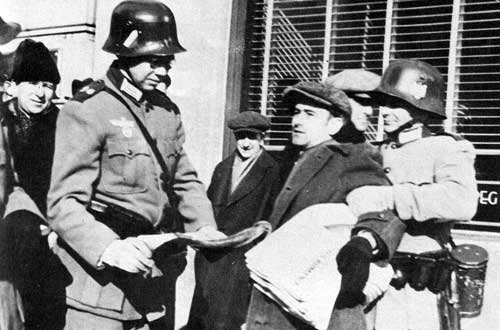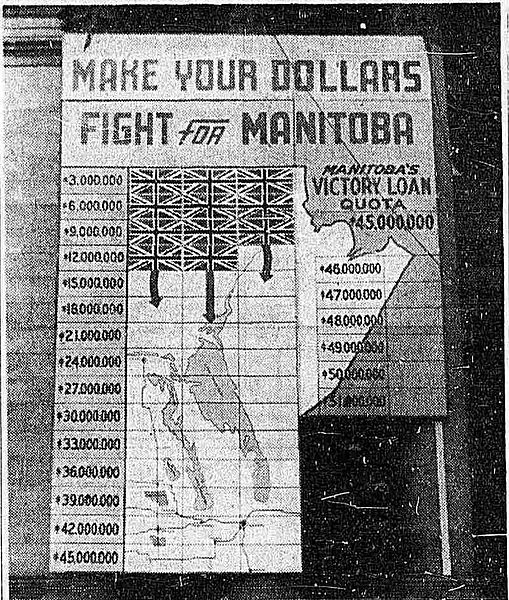Imagine if your city was invaded; imagine the fear, the uncertainty, the concern. Well this is exactly how the people of Winnipeg must have felt on the 19th February 1942, when their city was invaded by a Nazi force… albeit a simulated one.

The organisers certainly had realism in their minds, there was a staged fire fight between troops and volunteers dressed as German soldiers (the costumes having been loaned from Hollywood studios), tanks rolled down the main streets, there were mock bombings, radio broadcasts and even key officials in the local government were taken as political prisoners.
With a marketing message of “It Must Not Happen Here” the one day campaign had the desired effect. From an initial investment of C$3,000, around C$3.2m of Victory Bonds were purchased in a single day within the city.
Imagine ‘If Day’ Today – The Digital Invasion
By now you’re probably thankful for a history lesson about a fascinating, but relatively unknown event during the Second World War, but my question would be how such a campaign could look in today’s digital world?
If you remove the moral and ethical objections to scaremongering the public into buying bonds, the If Day campaign is a great example of a large scale, innovative and creative experiential campaign. If held today, the organisers would be looking for a digital strategy to run simultaneously in order to maximise the engagement and of course, the returns. How such a multichannel strategy could be shaped is wholly conjecture, but on considering the event, here are some ideas.
- Before the Invasion
Giving advance warning to the target audience isn’t just the first step in encouraging engagement but may also a good opportunity to establish that the event is a “simulation” – nobody wants a War of the Worlds situation. An email campaign, using creative along the lines of an intelligence dossier, providing this advance warning could provide this a number of weeks before, followed by a more “hastily scrawled” email the day before announcing the imminent arrival is one option. Social media could be used to spread ‘rumours’ of an invasion leading up to the event, using character profiles of intelligence personnel on the ground would be a way to add depth to the story.
- During the Invasion
In a world where there is constant demand for news and events Twitter would be the ideal place to post updates about the progress of the invasion.
YouTube would also be the ideal place to collate video from the event, and with the ingress of smartphones in today’s population, would be an excellent way to encourage user generated content. There would also be opportunities to use Facebook and Google+ to push key group participation during the day, the creation of a ‘Resistance’ would be just one of the ways to build fans rapidly. To further enhance the reach of the event, background takeover ads on high traffic websites would help to drive traffic and raise awareness.
Of course a website would sit at the heart of the invasion promoted through paid and organic search. A progress map, showing street by street the advance of the enemy troops would just be one element of functionality. To make the most of user’s content, a forum, where people can tell their stories, post videos and photos could also be included.
- Following the Invasion
The original If Day was built on the premise that people could “buy back” their province by purchasing victory bonds and in this modern day equivalent, this goal would remain. Subsequently the strategy would have to shift from reporting news, to encouraging purchasing behaviour.

On this website, the progress map, which initially showed the advance of the invasion could now become transactional and interactive, giving citizens the ability to “buy back” individual streets (representing bonds) and slowly push the invading force out of the city.
With website analytics, monitoring and assessing the success of the campaign would be significantly easier, and with multichannel funnel reporting would give much greater insight into how users engaged with the campaign. Naturally, the data and contacts captured during the campaign would shape the next drive for Victory Bonds, although the concept would have to change – a second invasion would be much less impactful.
A Hypothetical Example
Undoubtedly such an event could not happen again, not only is it unethical to use such tactics to encourage purchasing behaviour, but the budgets would be incomprehensible. Taking all of that into account however, it does provide a neat hypothetical example of a great campaign concept that would benefit from a digital strategy, incorporating elements of email, social media and search marketing as well as website functionality.
